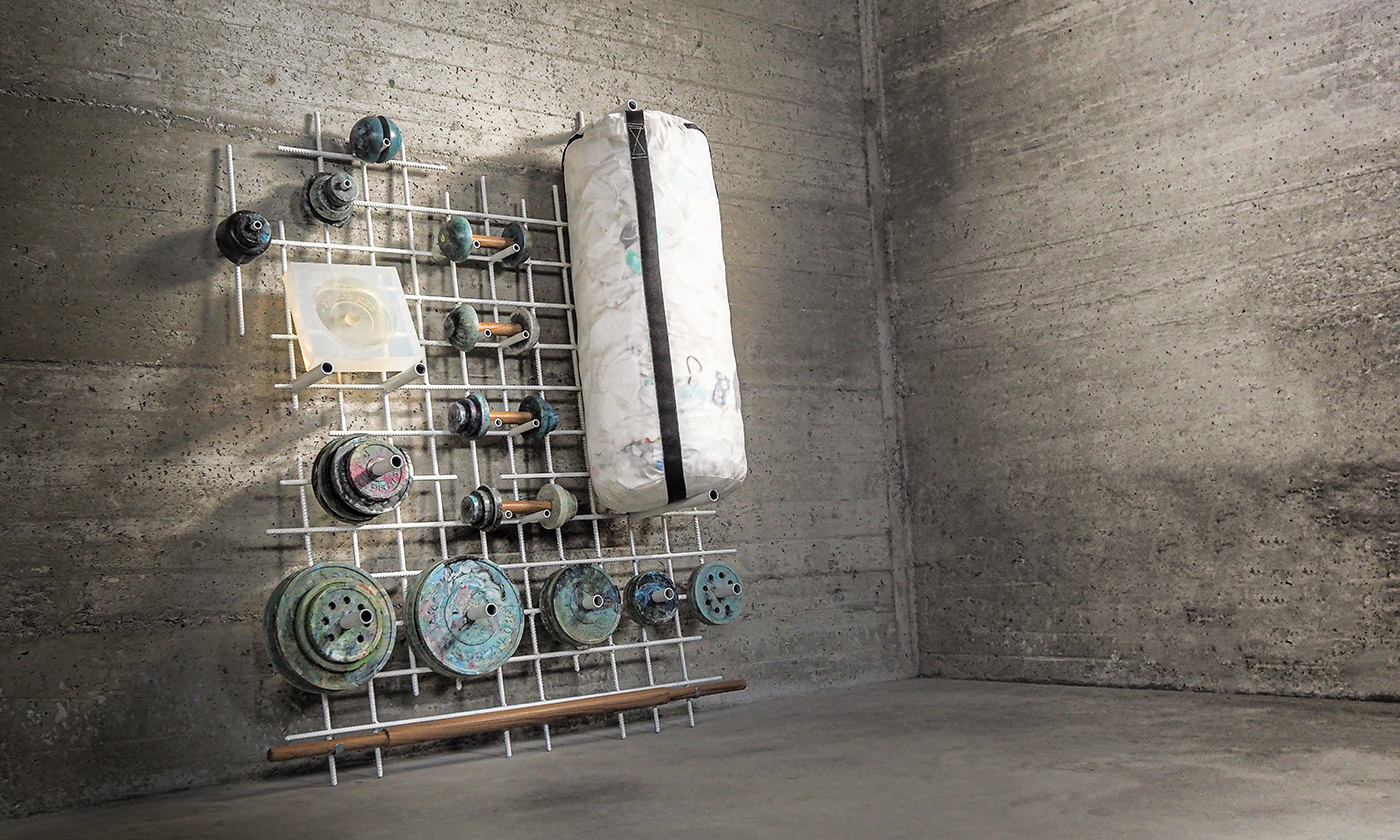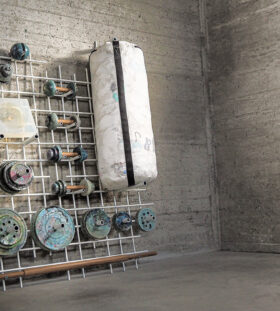Sporting Equipment Made from Unusual Materials

In the realm of sports, equipment has always been a game-changer. From the simple stone-made tools used in the early days of mankind to the high-tech gear of today, sporting equipment has experienced an immense evolution. This evolution has not just been about improving a player’s ability, but it also reflects our technological advancements and creativity. If, for example, pool players from a century ago could see the carbon fiber pool cues of today, they would likely be more than a bit shocked.
In the past, sporting equipment was mostly made from common materials like wood, leather, and basic metals. For instance, the first baseball bats were made entirely of wood, and golf clubs were constructed using a combination of wooden shafts and iron. Similarly, leather was a predominant material for balls in various sports.
However, in the modern era, the material science behind sporting goods has taken a revolutionary turn. The advent of synthetic materials, carbon fiber, and even recycled materials has drastically changed the design and manufacturing process of sports equipment. Today, sports gear is not just about functionality, but also about sustainability and innovation.
In the following sections, we’ll delve into the world of sporting equipment made from unusual materials, their impact, and the future they hold for the sports industry.
Innovative Materials in Play
Exploring the sphere of sports, one can’t help but marvel at the innovation and creativity involved in the design and production of sporting equipment. Let’s delve into some unique examples of sports gear made from unconventional materials.
The realm of soccer has seen an amazing innovation with the introduction of balls made from recycled materials. Companies like Alive and Kicking have taken an eco-friendly approach by making hand-stitched balls from reused materials. This not only reduces waste but also brings high-quality sports gear to areas with fewer resources.
Another surprising material finding its way into sports equipment is bamboo. Known for its strength and flexibility, bamboo is being used to craft skateboards. Brands like BambooSK8 produce high-quality, durable skateboards from this renewable resource, showcasing an unusual but effective use of materials.
In the world of golf, the traditional wooden clubs are being replaced by ones made from a variety of metals, including titanium. The use of titanium not only makes the clubs lighter and more durable but also allows for greater swing speed and distance.
These examples highlight the innovative use of unconventional materials in sporting equipment, adding a new dimension of sustainability and creativity to the world of sports.
Pushing the Boundaries – More Novel Creations
As we delve deeper into the world of sports innovation, we discover even more extraordinary examples of sporting equipment made from unconventional materials.
In the realm of basketball, Spalding released a ball constructed from recycled tires. This remarkable innovation not only makes use of waste materials but also provides a unique texture to the ball, enhancing the grip for players.
Tennis is another sport that has embraced the use of unusual materials. The traditional wooden rackets have long since been replaced by ones made from carbon fiber. This lightweight, high-strength material allows for a larger racket head and a stiffer frame, enhancing power and control in shots.
One of the most fascinating examples comes from the field of mountaineering. The climbing ropes, which were once made from natural fibers like hemp, are now made from ultra-high-molecular-weight polyethylene (UHMWPE), a thermoplastic material known for its extremely high strength-to-weight ratio. This results in ropes that are lighter, more durable, and more resistant to environmental damage.
These innovations not only highlight the use of unconventional materials in sports gear but also demonstrate how these materials can enhance performance and durability.
Going Green – Sustainability in Sports Gear
In a world grappling with climate change and environmental degradation, the sports industry is playing its part by exploring sustainable alternatives in equipment production. Using unconventional materials is not just about enhancing performance, but also about reducing the environmental footprint.
The use of recycled materials in sports gear production is a remarkable step towards eco-friendly practices. By repurposing waste materials, such as used tires for basketballs or plastic bottles for jerseys, we reduce landfill waste and conserve natural resources.
Cork, a renewable and biodegradable material, is being used in the manufacturing of yoga blocks and even cricket balls. Its natural resilience and durability make it an ideal choice for these applications, while its harvesting process is environmentally friendly, as the cork tree continues to live and grow.
Moreover, the use of synthetic materials like carbon fiber and UHMWPE reduces reliance on natural resources. These materials, often superior in strength and durability, can be produced with less energy and emit less carbon dioxide compared to traditional materials.
Thus, the shift towards unusual materials in sporting equipment is not just a testament to human innovation, but also a significant contribution towards a more sustainable future.
New Materials in Professional Competition – A Matter of Fairness?
As we witness the evolution of sporting gear, an important question arises: should new materials be allowed in professional competition? This question often stirs debate among sports enthusiasts, athletes, and regulatory bodies.
The answer is multifaceted, as there are several factors to consider: fairness, safety, accessibility, and the spirit of the sport.
Fairness and Performance
One of the main concerns about allowing new materials in professional competition is the potential for an unfair advantage. Some may argue that equipment made from advanced materials could provide certain athletes with a performance edge. For example, a tennis racket made from carbon fiber is lighter, stronger, and provides more power and control than a traditional wooden one. Thus, a player using this racket might have an advantage over a player using a wooden racket.
However, this argument is not as straightforward as it may seem. As technology evolves, so does the standard of play in sports. Most professional sports have already moved away from traditional materials. Golf clubs, tennis rackets, and many other pieces of equipment are no longer made with their original materials. As long as the new materials are universally accessible to all competitors, the question of fairness becomes less of an issue.
Safety
Another primary consideration is safety. New materials must be tested thoroughly to ensure they do not pose a risk to athletes. For instance, the tensile strength, flexibility, and impact resistance of a material might influence its safety during a game. Rigorous testing and standards need to be in place to ensure that the introduction of new materials does not jeopardize the safety of the sport or the athletes.
Accessibility
Accessibility is also a crucial factor. If new materials result in significantly more expensive equipment, it could create a barrier to entry for less affluent competitors, thus undermining the accessibility and inclusivity of the sport.
Spirit of the Sport
Lastly, we must consider the spirit of the sport. Some purists argue that the introduction of new materials might deviate from the original essence of the sport. For instance, wooden bats in baseball or leather balls in soccer have been fundamental aspects of the sports and changing them might alter the nature of the game.
In conclusion, whether new materials should be allowed in professional competition is a complex issue. It requires balancing the advantages of improved performance, sustainability, and safety against the potential impacts on fairness, accessibility, and the spirit of the sport. It is up to the governing bodies of each sport to make these decisions, taking into account the views of players, fans, and experts in the field. It’s an ongoing conversation – one that evolves as swiftly as the materials science that prompts it.
Embracing the Unconventional
The world of sports has always been a playground for innovation and creativity. But the shift toward using unconventional materials in sporting equipment production is a game-changer. It’s not only about enhancing performance and durability, it’s also about embracing sustainable practices and making a positive impact on the environment.
From soccer balls made from recycled materials to tennis rackets crafted with carbon fiber, the sports industry is pushing the boundaries of what’s possible. These materials, once considered unusual, are now at the forefront of sports innovation, offering unique benefits and opening new possibilities for athletes and sports enthusiasts alike.
The journey doesn’t stop here, though. As technology advances and our understanding of materials science deepens, we can expect to see even more innovative and sustainable solutions in sporting equipment. The future of sports lies not in sticking to the traditional, but in embracing the unconventional.




![Is Shrek on Netflix? Where to Watch All Parts on Netflix [2022]](https://tattoomagz.org/wp-content/uploads/Watch-Shrek-on-Netflix.jpeg)







